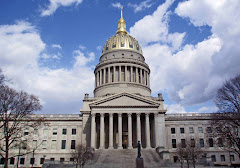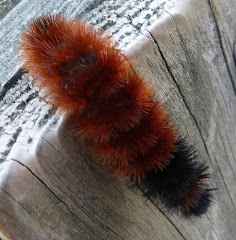This blog is dedicated to all those who are "Lighthouse Fanatics." I don't know exactly who you are, nor do I know why you think like you think . . . I just know you are out there. Like my older sister and the clock she has in her kitchen, you are poised and ready to look at whatever lighthouse might come along.
Now I admit most lighthouses are rather nice to look at, tall, slender, and poised on many days against a bright blue sky. And I know that at one time they were very functional, particularly when the sky wasn't all bright and blue. But the extent to which some carry it. . . I don't know. Further, I know there is a lot to them beyond the architecture, something about lenses and candle power which I little understand and hence will probably not bother to include. Anyways, here they are:
 The first one we saw was the famous Chicago Lighthouse at the entrance to the harbor to Chicago (of course). This is one of the few lighthouses that we have actually "used." We sailed past it in September 2005, when our Great Lakes Cruise ship entered the Chicago Harbor in order to dock at the Navy Pier. Our view of it on that day was somewhat obscured by an early morning haze that streamed out towards us on the lake from the city of Chicago. Obviously, on the afternoon we were there on this trip, haze was not a problem.
The first one we saw was the famous Chicago Lighthouse at the entrance to the harbor to Chicago (of course). This is one of the few lighthouses that we have actually "used." We sailed past it in September 2005, when our Great Lakes Cruise ship entered the Chicago Harbor in order to dock at the Navy Pier. Our view of it on that day was somewhat obscured by an early morning haze that streamed out towards us on the lake from the city of Chicago. Obviously, on the afternoon we were there on this trip, haze was not a problem.We also saw, at a distance, a lighthouse in Milwaukee WI. But we never got close enough, nor was the weather ever clear enough, to allow a decent shot of it.
And so we move on to the subject of the rest of these shots, the Lighthouses of the Mid-Oregon Coast. They were 4 in number.

The first Mid-Oregon Coast Lighthouse we saw has been dubbed by some of the tourist literature as "the most photographed lighthouse in America (O come on now, what about Cape Hatteras NC ?)." It was the Heceta Head Lighthouse. The Heceta (pronounced by the locals as "Heh-see-ta") Head Lighthouse has been rated as "the strongest light on the Oregon Coast" (the Oregon State Parks brochure didn't say by whom). It is sited 205 feet above the ocean and is a 56 foot tower with an adjacent building. It was first "illuminated" (i.e. the light went on) in 1894. The Assistant Lighthouse keepers house (built in 1893) is now a Bed and Breakfast, but we didn't stay there. The shot we took was from the far end of the Devil's Elbow State Park. Heceta Head is located about halfway between Cape Perpetua (see I told you we would leave there sooner or later), and the town of Florence (more on this burg in a later posting).

The next light we saw was the Umpqua River Lighthouse located just to the west of the town of Winchester Bay(more on this town in the next posting). While there is a state park with the same name nearby, the actual lighthouse is located on a small, still functioning US Coast Guard station. An earlier structure in the same spot was erected in 1857 and was the first lighthouse on the Oregon shore. The current 65 foot structure was "illuminated" the same year as the Heceta Head Lighthouse, 1894. Given the closeness of the dates of construction, it is not surprising that the Umpqua River Lighthouse is almost a complete copy of the Heceta Head Lighthouse shown above. While the county maintains a museum in the structure and tours are conducted there, the lighthouse, as I said, is adjacent to a Coast Guard station and is surrounded by Government Issue housing.

The next lighthouse is somewhat mis-named IMHO. It is called the Cape Arago Lighthouse. But we went to Cape Arago and saw no lighthouse (see a later posting). Instead, we found that the "Cape Arago" lighthouse is located about 2-3 miles north of the cape on an islet just off Gregory Point (so why didn't they call it the Gregory Point Lighthouse?). It was the newest lighthouse we saw. It was "illuminated" in 1934. Even though it is only 44 feet tall, the cliff it sits on is 100 feet above the ocean. Thus, I suspect it is very visable. It does have a very unique sounding fog horn. I realize now I should have shot a "movie" of this scene so that I could have captured the sound. (But I am still new at the "game" of blogging.) Sorry.

The last lighthouse we saw was the 40 foot tall Coquille River Lighthouse, across the Coquille River from the town of Brandon. It was "commissioned" in 1896, but my source did not say when it was "illuminated." It was later de-commissioned in 1939, and restored as a museum and interpretative center in 1979. We had hoped to get shot of this structure from the front, but, as you will see when I get to the Brandon posting, the weather moved in on us very badly and cut short our stop in that town.
There, you have it. The lighthouses we saw. I trust this posting has been "illuminating" to say the least.



























 to tour, and could find "support" (i.e. Motels and Rental Cars) that would assist us in our further travels. Plus, if you will note from the map, the way our trip finally turned out, Eugene is almost the exact center of the northern boundry of the country that we saw. An extra benefit for me, was that we were able to base this trip off of a "smaller city." We had neighbors who took a similar trip last year to the same area, but they did it by flying into Portland and renting a car from there. This way, we got a totally different experience, both in getting there by train, and by leaving from a "smaller city."
to tour, and could find "support" (i.e. Motels and Rental Cars) that would assist us in our further travels. Plus, if you will note from the map, the way our trip finally turned out, Eugene is almost the exact center of the northern boundry of the country that we saw. An extra benefit for me, was that we were able to base this trip off of a "smaller city." We had neighbors who took a similar trip last year to the same area, but they did it by flying into Portland and renting a car from there. This way, we got a totally different experience, both in getting there by train, and by leaving from a "smaller city."























